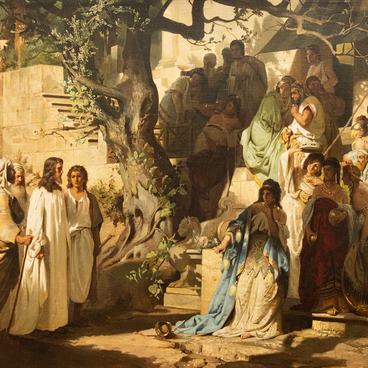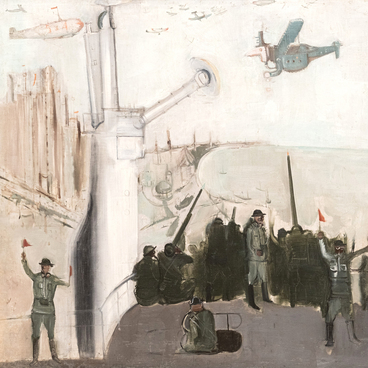Nikolay Vasilyevich Pirogov was born in 1872.
Between 1892 and 1901, he studied at the St. Petersburg Academy of Arts under the guidance of the battle painter and animalist Pavel Osipovich Kovalevsky. He was a founding member of the New Society of Artists, a creative association of young painters, sculptors, and architects which existed in Petrograd from 1903 to 1917.
At the end of 1901, Nikolay Pirogov was awarded the title of artist for his painting “Bringing the Granted Bell to the Sovereign’s Estate Monastery”. This work is now housed by the State Museum of Fine Arts of the Republic of Tatarstan.
The short creative career of Nikolay Pirogov took place in the first decade of the 20th century. It was marked by numerous paintings and drawings for the magazines “Lukomorye” and “Niva”. Most of these works were genre scenes, with the Russian troika often being a prominent element. Some of Nikolay Pirogov’s contemporaries also explored this theme masterfully, including his teacher at the Academy of Arts, Pavel Osipovich Kovalevsky.
In 1914, Pirogov’s painting “Returning from the Horse Market” was shown at a posthumous exhibition after the artist’s death in 1913. The painting was soon acquired by the Museum of the Academy of Arts and later transferred to Pskov in 1919.
The plot of Nikolay Pirogov’s painting could have been an episode from real life. In the center, there is the back of a moving cart and its wheel. At the top, three horses are running. In the distance, a man wearing a red shirt rides a white horse on the left. On the right, there is a gypsy in a dark blue overcoat on a cart. In the background, there is a landscape with a strip of blue forest on the horizon.
The painting is distinguished by sweeping strokes applied with a large brush. This technique is known as impasto when paint is laid on the surface thickly to create a relief. Such brushstrokes, in this case combined with an incompletely painted canvas, create a play of color and texture. The angles chosen by the artist emphasize the condition of the horses, going mad because of the fast running, which are in contrast with the figure of the man sitting in the corner of the cart with his head lowered. The composition is cut horizontally.


